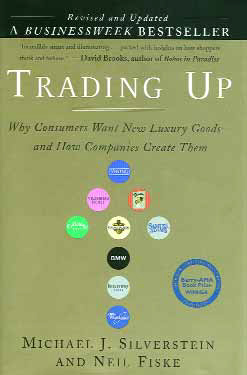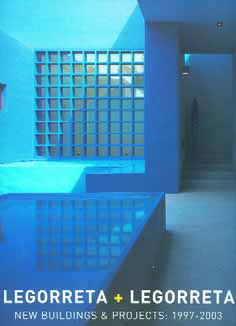Book & Media Reviews
For many clients, the decision to purchase a watershape represents the second or third largest expenditure they'll ever make. As a result, understanding the psychology that drives client decision-making is an issue that cuts very close to the heart of what we all do for a living. To gain a firmer grasp on what makes clients tick, I recently turned to Trading Up, an insightful book by Michael Silverstein and Neil Fiske (Penguin Group, 2005). The 300-page text explores the issue of why people choose to spend more money in some areas of their lives while allocating less to others - a fascinating approach that sheds a great deal of light on the dynamics of making large financial decisions. The premise of Silverstein's and Fiske's discussion is that most people have an idiosyncratic curve of preferences when it comes to making significant purchasing decisions. Why, for example, will some people will set aside substantial resources to buy a Mercedes or Jaguar while spending (relatively) much less on
When we think about tree houses, most of us we probably think of the ramshackle platforms built by kids and suspended precariously up in backyard oaks or sycamores. (Those of us who are a bit older might also think about the amazing makeshift domicile in the movie "Swiss Family Robinson" or the wonderful "ride" of the same name at Disneyland.) Not long ago, however, my daughter guided me to a trio of publications that cover tree houses from an entirely different perspective. In reading them, I was enlightened to the fact that, first of all, tree houses
If you're uncomfortable with ultra-adventurous design schemes, you can stop reading this review right now. If, however, you find inspiration in projects that are completely original, then Diarmuid Gavin's Outer Spaces is an amazing and rewarding book. The 256-page text (DK Publishing, 2003) covers 25 mind-blowing projects by this award-winning Irish landscape architect and host of his own PBS series, The Home Front. Gavin has become something of an international celebrity with a reputation for creating what might loosely be termed "contemporary spaces" that use materials, shapes, plant materials and water in extraordinary and surprising ways. In this book (one of several he's published), he starts by
This is an unusual edition of "Book Notes." Yes, it involves reading a book or two, and those books have had a positive effect on my work as a watershaper, but they're well off the path of our usual discussions of publications relating to design, construction or business philosophy. Instead, it's about
It's unfortunate, but all too often watershapers and landscape professionals go to extraordinary lengths in designing and building beautiful spaces - then don't take care of business when it comes to capturing those spaces with quality photographs. This is despite the fact that photography is hugely important to so many of us, if only to give us a worthy photographic record of our work to use in marketing and selling future projects. These images make up our portfolios, dress up our offices and showrooms and serve as
In my work as a landscape architect and designer/builder of mostly residential swimming pools, I concede that I've never really given much thought to the subject of maintenance. Sure, the watershapes I've designed have proper hydraulic and circulation systems as well as correctly sized filtration systems, the proper number of skimmers and so forth, but beyond that, the specifics of swimming pool care have been beyond my concern. So I've let the terminology of water chemistry, for example, become a foreign language to me, and I've never known much about things like water testing, pH or sanitizer residuals. Through the years, however, I've come to believe that this is not a situation for a designer/builder in which ignorance is bliss. This is partly because I now work for a firm that runs a retail store with a service department and I interact with those folks on a regular basis; but it's also because more and more of my design/installation clients are asking me
Back when I was still new to watershaping in the mid-1990s and working for a construction firm in Northern California, I was asked to review a project for a custom home under construction in Napa Valley. I was intrigued, partly because the identity of the client was a closely held secret and partly because all project information and bidding was flowing through an architect in Mexico City. But what really grabbed my attention was the set of plans for the home and grounds - just incredible! I'd never seen anything like it. The modernist-style home was based on big vertical and horizontal planes in brilliant colors. There were courtyard fountains, large rectilinear reflecting pools and a beautiful vanishing-edge swimming pool. The design was so outstanding that even when we missed out on the project, I held onto
Concrete is so essential to the work of watershapers and so pervasive in all forms of construction that it's a bit too easy to take it for granted. Using myself as an example, I'll confess to having fairly thin knowledge of the material, its history and the myriad uses to which it is put to use - until, that is, I looked through Concrete: A Pictorial Celebration (published by the American Concrete Institute in 2004). This wonderful, 260-page book offers a (mostly) visual tour of the fantastic and utterly essential applications of concrete that have indelibly marked the advance of modern society, worldwide. It's organized into several sections, each one chock full great photos accompanied by informative, albeit brief, textual passages. It's not a technical discussion by any means; instead, it's an almost dizzying tour of the
In this business, there's no avoiding the fact that you have to be able to work with people. That may seem an obvious point, but if you're like me and tend toward the shy side, stepping out of your shell to work with others is not always easy. I've always admired those with easy-going social skills, but I've never been one of them - and I know in this industry that I'm far from alone. In my case, I've found my way around my basic tendencies by taking advice I've found to be incredibly helpful in my work with clients as well as in my relationships with sub-contractors and fellow employees. That advice comes from one of the true classics of 20th-century American publishing, none other than Dale Carnegie's How to Win Friends and Influence People. If you're not familiar with this volume beyond its name, you might be impressed by the fact that Carnegie's seminal self-help book was first published in
If there's one thing we all know without any question, it's that nobody is getting any younger. In fact, if you read any of the demographic information available these days about the "graying" of the Baby Boom generation, it's clear that our entire country is becoming older en masse. During the past year, I've experienced for myself what this means to us in the watershaping trades in the form of a dramatic uptick in the number of clients, most of them elderly, who have approached our firm looking for swimming pools primarily for the purpose of aquatic aerobics and other forms of water exercise. For the most part, these prospects and clients have made it clear they would not otherwise be interested in purchasing a pool: They need it, they say, to pursue therapy for a range of physical conditions and ailments. With that trend in mind (and anticipating the needs of my own aging frame as well), I decided to






















